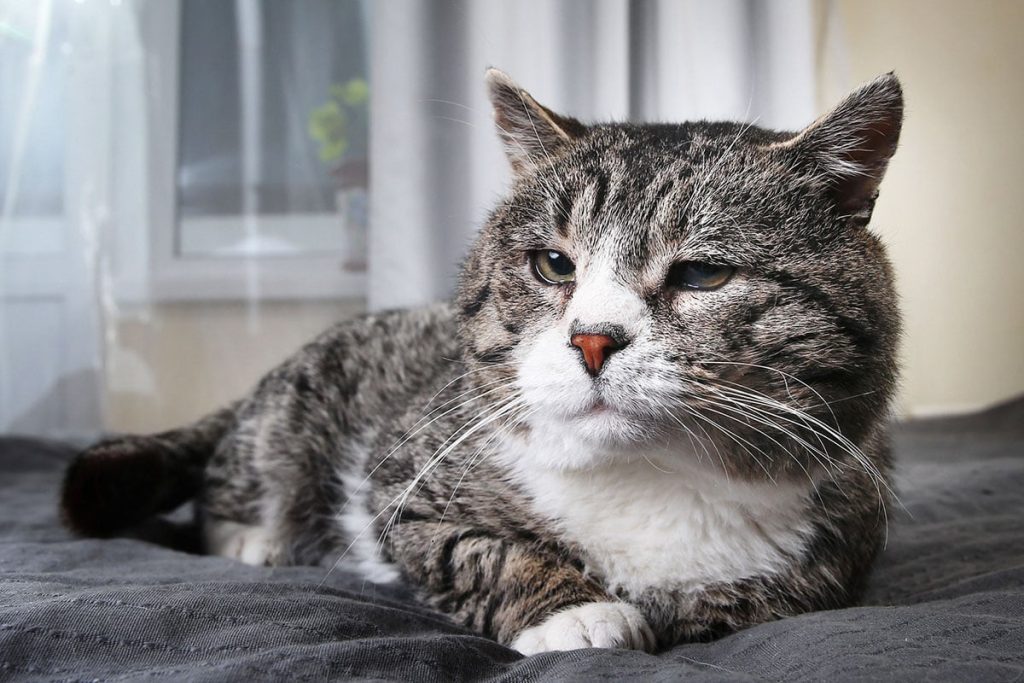Top tips for flying with an older cat
Cats are said to be creatures of habit and do not generally make great travel companions. Senior cats take longer to adjust to new places and new situations. Relocating older cats may be a challenging proposition, but with careful planning and precautions, one can easily overcome these challenges. If you are planning on moving an older cat to a new country, read on for tips on how to keep your cat comfortable during the trip.
How old is a senior cat?
Though cats are considered senior when they turn ten years old, they are known to live past their teens and into their early 20s. Around the age of 10 to 12 years, cats start slowing down noticeably, and health issues such as arthritis and diabetes begin to appear. As they grow older, cats develop vision problems and loss of hearing. At 15 and above, cats start to show age-related cognitive dysfunction; you will notice that they nap a lot more and tend to become very irritable and grumpy.
Your cat’s movement will become slower, and his or her appetite might change. Regular veterinary check-ups can help your kitty live a long and healthy life. Your vet will be able to address these issues with appropriate diet, exercise and medicine.

Start planning early
Relocating a pet to a different country involves a series of veterinary requirements to be fulfilled as well as documentation, which is different for different countries. Start planning much ahead of the date of departure for a stress-free move.
Many countries have quarantine regulations, which could mean that your older cat might have to spend around one week to six months in a quarantine centre, depending on the country you are travelling to. Beginning your travel planning early will help you understand the rules better and plan accordingly.
Talk to the vet
Talk to your vet for an honest assessment of the health of your senior cat. Ask your vet for a geriatric examination to discover any age-related health issues your cat might have. Speak to the vet about medicines and supplements your older cat will need for the journey and during the quarantine period if any. Stock up on the medication to avoid last minute stress.

Crate training is vital
Your older cat will be travelling in the cargo hold of the aeroplane, and therefore it is crucial that he or she travels in a sturdy IATA-compliant crate that can withstand the rigours of air travel. The crate has to be big enough for your cat to stand up, turn around and lay down comfortably. The crate dimensions are critical because the airline will not allow your pet to board if the crate does not conform to the regulations.
Get the crate weeks ahead of the date of travel and let your senior cat get accustomed to it. Keep the crate in your house and let your cat explore the crate. Feed him or her treats and praise them lavishly when they enter the crate. 
Top tips for flying with an older cat
Schedule the flight well
Iff you are unsure about which airline is pet-friendly and when to book your pet’s flight, taking the assistance of a professional pet relocation company is a good idea. Your pet travel specialist will be able to help you with the right flight and the right airline, ensuring the comfort and safety of your older cat.
Do not sedate your cat
Tranquilisers and sedatives affect the ability of the cat to regulate body temperature and can have severe consequences at high altitudes. A better alternative to calm a grumpy cat would be to spray the crate with calming essential oils.
Get professional help
- Professional pet relocation services can assist by helping you with all aspects of the move, right from the documentation, health checks, booking the tickets and more.
- If you are moving to a new country with your senior cat, get in touch with us at ASIAPATA for a detailed travel plan and more advice on how to make the journey comfortable for your cat.
Please contact us immediately so that your pet can experience the best service
Read more article about us at :














